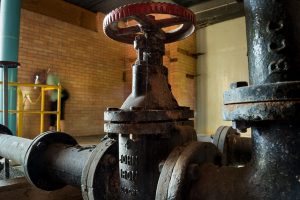
Outdated water infrastructure is threatening the public health and the nation’s economy. The state of that infrastructure is being studied and analyzed throughout the country through a series of H20 Catalyst interactive town hall broadcasts. The meetings are designed to explore the state of American water infrastructure in what is being called an era of “replacement, repair and reinvestment.”
The first such town hall broadcast was held this week, hosted by Circle of Blue with American Public Media and Columbia University. This particular broadcast addressed what it would take to upgrade aging and inadequate pipes and treatment plants and possible ways to revamp how water is collected and treated in this country.
There was consensus among the water and infrastructure experts participating in the broadcast that the nation’s aging and deteriorating water systems are critically in need of improvements and/or replacement.
The elephant in the room, of course, when one talks about the disastrous effects that can result from lack of adequate infrastructure and failure to maintain current infrastructure is the crisis in Flint, Mich. The city’s drinking water became contaminated by lead, and the city now faces the possibility of children who were exposed to that water facing developmental and behavioral problems.
No one denies that the nation’s infrastructure is suffering from what President Barack Obama called “a culture of neglect.” With water infrastructure, officials now face the questions of how to fix the problems and how to pay for it.
The necessary water infrastructure investment needed in the United States over the next 10 years, according to the American Society of Civil Engineers, is $105 billion. And, to replace the more than 7.3 million lead service lines would cost between $30 billion and $40 billion. While municipal bonds and federal loans and grants have provided financing for water-related projects in recent years, experts expect many future upgrade costs to be borne by water customers. And, alternative sources of funding that involve the private sector also are under consideration.
In addition to addressing financing water infrastructure needs, participants in the town hall meeting also discussed the growing problem of water scarcity. With many areas of the nation facing drought conditions, new water sources and management of existing sources are the latest concern. Technology could play an important role in how water sources are protected and expanded.
Other H2O Catalyst town hall broadcasts to bring global water experts together to address the nation’s deteriorating water systems are planned in the future. It is time that these types of serious discussions are held regarding the critical infrastructure needs necessary to deliver this life-sustaining commodity to American communities.

